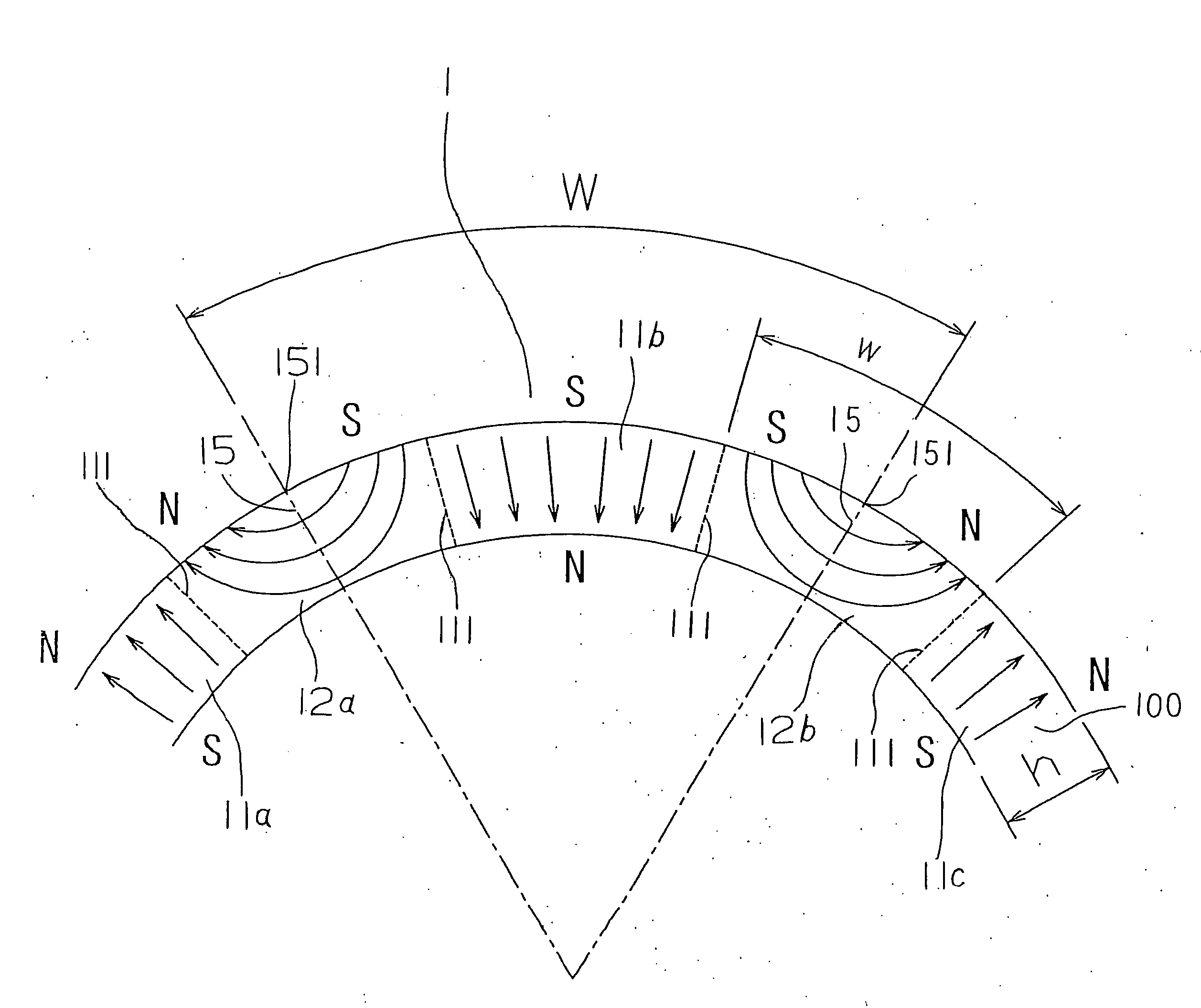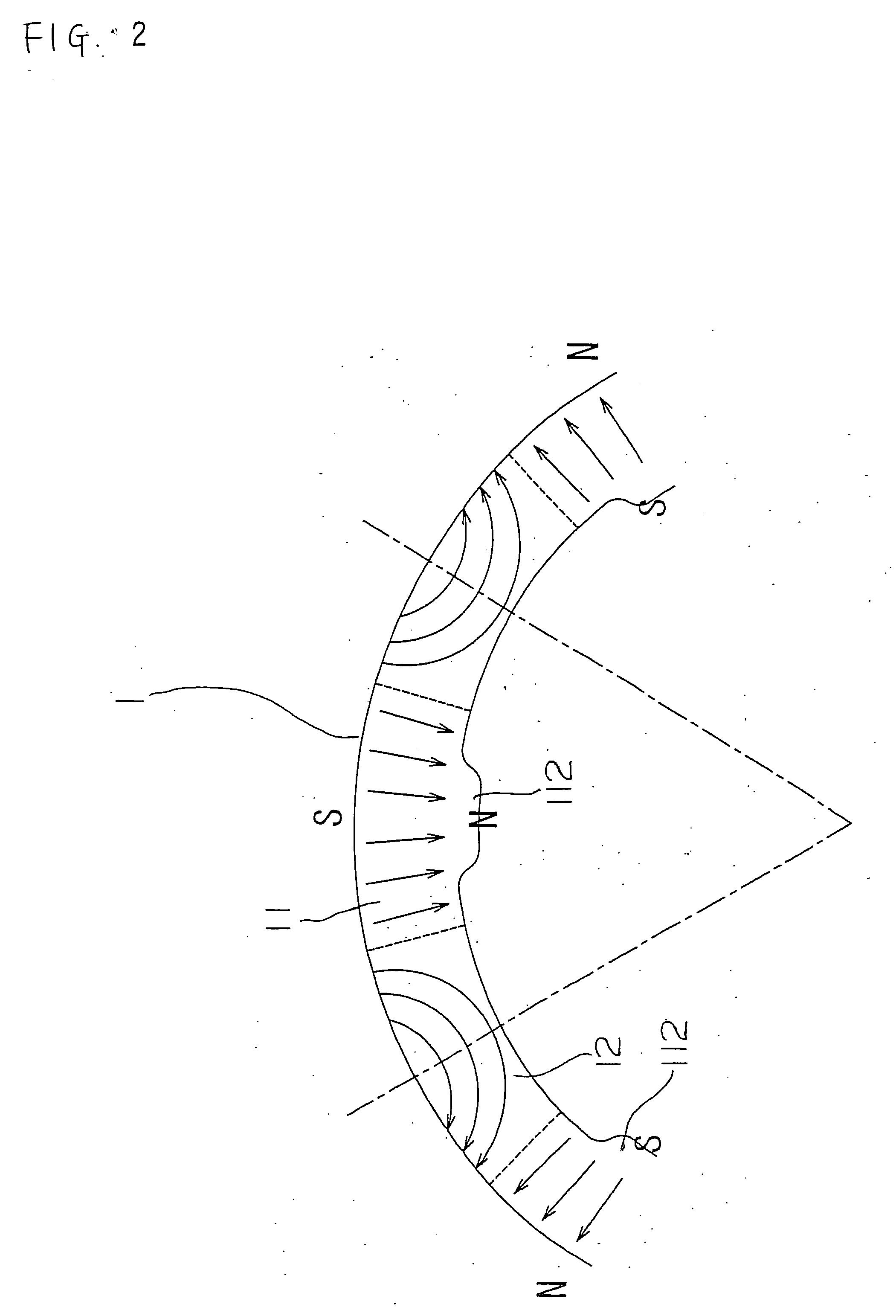Thin hybrid magnetization type ring magnet, yoke-equipped thin hybrid magnetization type ring magnet, and brush-less motor
a hybrid magnetization and hybrid magnet technology, applied in the direction of magnetic circuit rotating parts, magnetic bodies, magnetic circuit shapes/forms/construction, etc., can solve the problems of large cogging torque, inferior surface magnetic flux, and inability to fit inside the magnet, so as to improve the performance, reduce the cogging torque of the brushless motor, and increase the torque per unit volume of the magnet
- Summary
- Abstract
- Description
- Claims
- Application Information
AI Technical Summary
Benefits of technology
Problems solved by technology
Method used
Image
Examples
Embodiment Construction
[0062] The present invention is explained below through the use of embodiments. However, the present invention is not limited to the embodiments stated hereafter.
[0063] The hybrid magnet structure having to do with a specific embodiment of the present invention is shown in. FIG. 1. Hybrid magnet 1 has a ring shape centered around the axis. FIG. 1 shows a magnetic pole and its vicinity in a cross sectional diagram perpendicular to the axis of hybrid magnet 1 of the embodiment. By way of example, Nd—Fe—B anisotropic rare earth bonded magnet 100 is used in hybrid magnet 1.
[0064] The arrows within hybrid magnet 1 indicate the magnetization pattern of the magnet interior.
[0065] Because the present embodiment is an anisotropic bonded magnet, magnetic field alignment is performed before magnetization, and the alignment pattern is the same as in FIG. 1. Hybrid magnet 1 of the present embodiment has 10 magnetic poles. The magnetization pattern was described above and is therefore omitted ...
PUM
| Property | Measurement | Unit |
|---|---|---|
| thickness | aaaaa | aaaaa |
| diameter | aaaaa | aaaaa |
| width | aaaaa | aaaaa |
Abstract
Description
Claims
Application Information
 Login to View More
Login to View More - R&D
- Intellectual Property
- Life Sciences
- Materials
- Tech Scout
- Unparalleled Data Quality
- Higher Quality Content
- 60% Fewer Hallucinations
Browse by: Latest US Patents, China's latest patents, Technical Efficacy Thesaurus, Application Domain, Technology Topic, Popular Technical Reports.
© 2025 PatSnap. All rights reserved.Legal|Privacy policy|Modern Slavery Act Transparency Statement|Sitemap|About US| Contact US: help@patsnap.com



